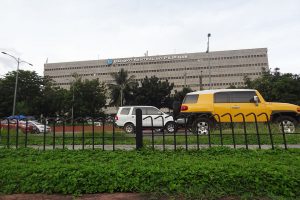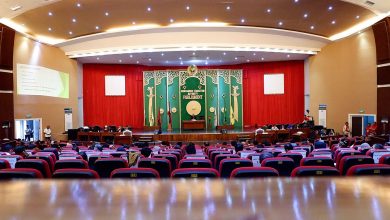BSP set to require banks to use standard form for business loan applications

THE BANGKO SENTRAL ng Pilipinas (BSP) has approved a circular requiring financial institutions to use a standard business loan application form (SBLAF) to make credit more accessible for small businesses, an official said on Wednesday.
BSP Director of Financial Inclusion Group Ellen Joyce L. Suficiencia said the new circular was signed by BSP Governor Felipe M. Medalla on Wednesday and will soon be issued by the central bank.
“The BSP is issuing this new loan application form, basically a standard form that will be used by the banks,” Ms. Suficiencia said during the Financial Executives Institute of the Philippines’ (FINEX) annual conference on Wednesday.
“This aims to reduce the intimidation and make the business loan application form less intimidating and more borrower friendly,” she said, adding that this would encourage more micro, small, and medium enterprises (MSMEs) to tap banks for loans.
Ms. Suficiencia said the SBLAF is part of the central bank’s initiatives to promote the strategic objectives of the new National Strategy for Financial Inclusion (NSFI).
“At least for the BSP, what we want to see is for the MSME and the (agriculture) sector to be recognized as a viable target market segment for credit and other financial services because the moment the market players see that this market segment is viable, then we will see strategic investments flow from them,” Ms. Suficiencia said.
“They will invest in their specialization tools, innovative approaches, product development, and that ultimately benefits the MSMEs and the agri sector in terms of innovative product offerings, hopefully at better prices,” she added.
The central bank in July released a draft of the circular on the adoption of the SBLAF.
“The adoption of the SBLAF templates by covered entities supports the MSMEs’ access to financial products and services by facilitating transparency, ease of understanding, and efficiency in loan applications (i.e., reduced turnaround time in processing loan applications),” the BSP said in the draft.
Under the proposal, the prescribed templates for loan application will serve as the primary application screening tool to be accomplished by a borrower.
There will be two kinds of SBLAF: one for individuals, sole proprietorships, and one person corporations, and another for cooperatives, partnerships, and corporations. The forms shall be used for new, renewal, and restructuring of covered loan applications.
In the draft circular, covered entities are given a one-year compliance period, with an additional six months for those that need to make adjustments in the processes and systems to meet the BSP’s new guidelines.
Ms. Suficiencia on Wednesday also mentioned recent initiatives of the BSP such as the Paleng-QR PH and the proposed basic merchant account framework to promote digital payment adoption among micro and small businesses.
BSP Deputy Governor Bernadette Romulo-Puyat in a video message said the central bank has been pushing for various policies, programs, and reforms as it targets to introduce 70% of Filipino adults into the financial system.
“Transformational change like advancements in digital payments will reshape our future. These developments not only contribute to economic growth, but also empower those who are financially excluded,” Ms. Romulo-Puyat said.
In January, the BSP relaunched an updated six-year NSFI meant to improve consumer welfare and Filipinos’ financial resiliency.
“The updated strategy aims to financially include Filipinos and their families, allowing them to establish financial resilience and maximize opportunities,” Ms. Romulo-Puyat said.
The country’s banked population was at about 56% of all adults in 2021, up from just 29% in 2019, results of the central bank’s 2021 Financial Inclusion Survey showed.
Digital payments also made up 30.3% of the total volume of retail transactions in 2021, and the value of payments done online represented 44.1% of total transactions last year.
The BSP wants to digitize at least 50% of the volume and value of total retail payments by 2023. — K.B. Ta-asan




